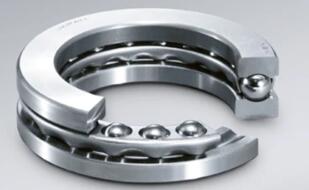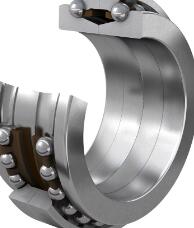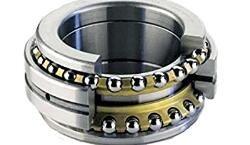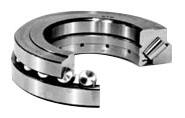4 Main Types of Thrust ball bearings
Thrust ball bearings are used to support axial loads in a wide range of applications.
There are four main types: single-direction, double-direction, self-aligning, and angular contact. Ideal for low-speed and high-load applications.
Thrust ball bearings are a versatile and cost-efficient form of bearing that offer support in both radial and axial directions.
With four main types, they are the perfect choice for a variety of applications.
Whether you need a thrust bearing for high speeds or low noise, there is a type of thrust ball bearing that is right for you.
Thrust ball bearings are ideal for applications that require limited space and high axial load capacity.
They come in four main types: single direction, double direction, double row, and angular contact.
Single direction type can handle axial loads in one direction while the double direction from both directions.
The double row and angular are for high-speed applications.
Thrust ball bearings are used to support loads and reduce friction in rotating axles.
Know more about the four types of it by continuing to read below!
What is Thrust ball bearing?
A thrust ball bearing is a type of rolling-element bearing that consists of two grooved washers, often made of bearing steel, with a ball in the middle.
The two washers are arranged so that the ball is sandwiched between them.
The two washers and the ball rotate independently from each other so that when a load is applied, the washers and the ball move in unison to support the load.
Thrust ball bearings are used in applications where high axial loads are present, such as in crane wheels, and in applications that require a high degree of rigidity and accuracy, such as in precision machine tools.
They offer excellent performance in applications that involve high speeds and heavy loads.
Their design allows them to handle radial and axial loads simultaneously, which is why they are often used in combination with other types of bearings.
Types of Thrust ball bearings
Single-direction thrust ball bearings

Description and characteristics
Single-direction thrust ball bearings are a type of ball bearing used to support axial loads.
They are composed of two washers, one of which has a groove for the balls.
The balls are arranged so that the thrust load is supported in one direction only.
The washers are separable and held together by a cage and are available in both metric and inch sizes.
Characteristics of single-direction thrust ball bearings include:
1.High axial load capacity:Single-direction thrust ball bearings can support significant axial loads in one direction.
2.Low cost:The cost of these bearings is much lower compared to double-direction thrust ball bearings.
3.Low torque: Single-direction thrust ball bearings generate very little torque, making them suitable for applications where low starting torque is desirable.
4.High-speed capability: The low friction of the ball bearings allows them to operate at high speeds.
Examples of common applications
Single-direction thrust ball bearings are used in a variety of common applications due to their ability to provide directional support for rotating axles and shafts.
These bearings are ideal for use in applications such as:
-1.conveyor belts
-2.compressors and pumps
-3.aerospace and automotive applications
-4.machine tools and robotics
-5.heavy-duty vehicles and agricultural machinery
-6.medical equipment, office equipment, and consumer electronics
Double-direction thrust ball bearings

Description and characteristics
Double-direction thrust ball bearings are a type of bearing that utilizes two thrust-type raceways to support two thrust loads.
These bearings are designed to take both axial and radial load, and in some cases, can accommodate misalignment.
These bearings feature a spherical outer surface with grooves along the raceways.
The ball bearings are loaded into the grooves, allowing them to move freely in both directions.
The grooves also help reduce friction and vibration between the raceway and the ball bearings.
Double-direction thrust ball bearings are known for their durability and long life.
They are also resistant to wear and tear and can withstand extreme temperatures and environmental conditions.
Additionally, they are low-maintenance and require minimal lubrication.
Examples of common applications
This type of bearing is typically used in applications such as:
-1.transmissions
-2.pumps
-3.high-speed rotating machinery
Angular contact thrust ball bearings

Description and characteristics
Angular contact thrust ball bearings are highly versatile and are used for high-speed applications in axial and radial loading conditions.
They are designed to be able to handle combined loads, i.e., both axial and radial loads, and they can also be used to support heavy thrust loads.
These bearings have a high load-bearing capacity and are ideal for applications that require high speeds and/or high loads.
The main characteristics of angular contact thrust ball bearings are:
1.High speed and load capacity: Angular contact thrust ball bearings are designed to be capable of handling both axial and radial loads, as well as thrust loads.
This allows them to be used in applications where high speed and/or high loads are present.
2.High accuracy: Angular contact thrust ball bearings are highly accurate and are generally used in precision applications.
3.High reliability: These bearings are designed to be highly reliable and are used in many critical applications.
4.Low friction: Angular contact thrust ball bearings are designed to have low friction, which makes them suitable for applications with high speeds and/or high loads.
5.Easy installation: Angular contact thrust ball bearings are designed to be easy to install and maintain.
Examples of common applications
Angular contact thrust ball bearings are commonly used applications including:
1.Automotive: These bearings are used in steering systems, wheel hubs, transfer cases, and axle carriers.
2.Industrial: Angular contact thrust ball bearings are used in industrial applications such as pumps, compressors, motors, and gearboxes.
3.Agricultural: Angular contact thrust ball bearings are used in agricultural equipment such as tractors, combines, and harvesters.
These bearings are designed to handle the combined axial and radial loads, making them ideal for applications that require both.
Self-aligning thrust ball bearings

Description and characteristics
Self-aligning thrust ball bearings are designed to accommodate both axial and radial loads.
They can compensate for misalignment and can accommodate angular misalignments of up to 3°.
The thrust bearing has two rows of balls that are guided by a cage, which helps to control the direction of the load.
The inner and outer races are designed to house the two rows of balls and the cage.
The bearing is designed to keep the balls in contact with the races at all times, which ensures that the bearing can carry the axial and radial loads.
The bearings are most commonly used in applications requiring high thrust loads and radial loads.
They are also used in applications where the shaft may be misaligned or where the shaft must be able to rotate around its axis.
Self-aligning thrust ball bearings are available in a variety of sizes and can be used in a wide range of applications.
Self-aligning thrust ball bearings have several advantages over other types of bearings.
They can handle misalignment, provide a high load capacity, and are low maintenance.
Additionally, they are easy to install and require minimal lubrication.
They are also able to absorb impact and vibration and are suitable for high-speed applications.
Examples of common applications
Self-aligning thrust ball bearings are used in applications where rotating shafts need to be supported while allowing for misalignments, such as in:
-1.engines and motors
-2.machine tools
-3.medical equipment
Importance of selecting the appropriate type of thrust ball bearing
Thrust ball bearings are used in a variety of applications and are particularly useful in applications where axial loads are present.
Thrust ball bearings are designed to limit axial movement. They have a low radial load capacity and are used for axial loads only.
The correct type of thrust ball bearing must be selected based on the application requirements, such as load, speed, and temperature, to ensure the proper functioning and long-term reliability.
It is also important to select the right size of the thrust ball bearing.
If the bearing is too small, it can fail due to overload, while if it is too large, it can create excessive friction and reduce the efficiency of the machine.
The bearing size should also be selected based on the load capacity, speed, and temperature requirements of the application.
Selecting the appropriate type of thrust ball bearing is important for ensuring the proper operation of the machine and for minimizing wear and tear on the components.
Selecting the wrong type of thrust ball bearing can lead to increased wear and tear on the components, decreased load capacity, and instability.
Conclusion
Thrust ball bearings are a great choice for many applications due to their low cost, low maintenance, and easy installation.
They are available in four main types – single direction, double direction, angular contact, and self-aligning.
Each type has its unique features and benefits, making them a versatile option for many applications.
Ultimately, selecting the right thrust ball bearing depends on the specific application and requirements.





